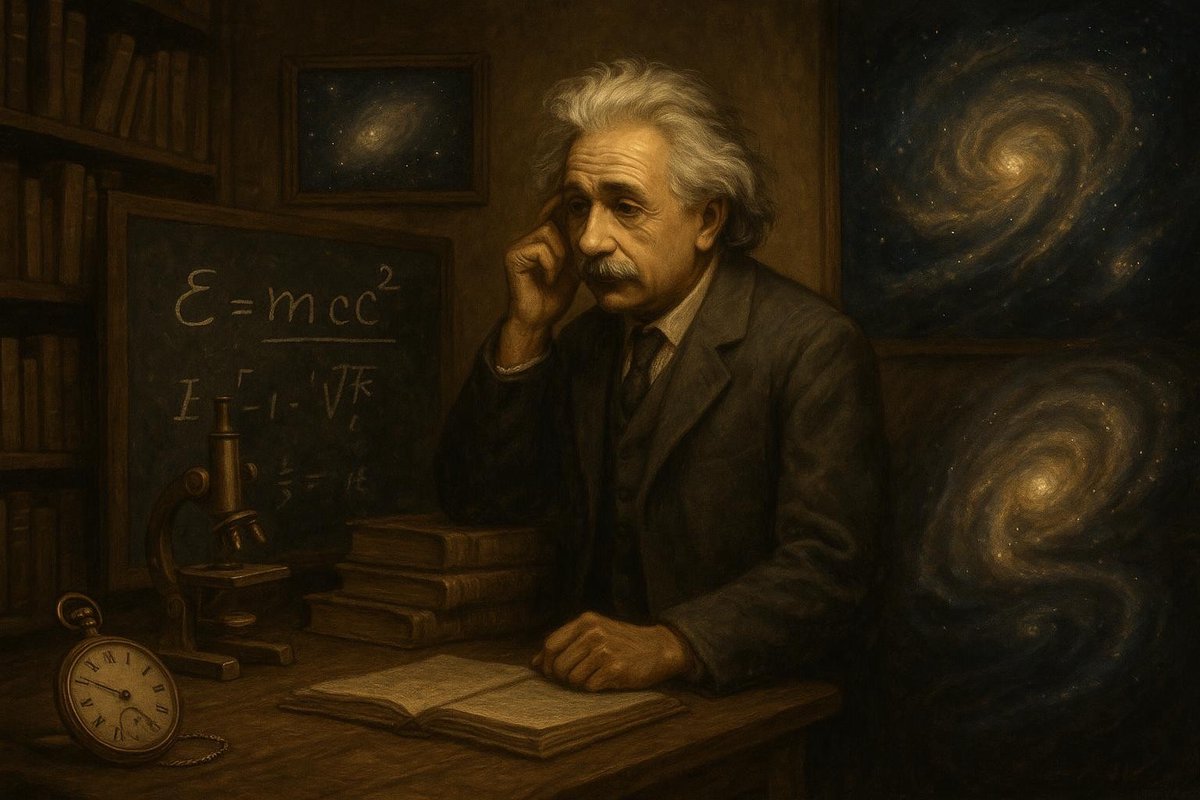
Imagine standing at a train station, witnessing a seemingly simple event — a train hurtling past. Yet, this ordinary occurrence masks a profound truth: time itself is not fixed. It bends and stretches in response to the cosmos. Albert Einstein’s Theory of Relativity forever changed our understanding of this strange dance between time and space, redefining the very fabric of reality.
The Problem Context: A World Bound by Newtonian Chains
Before Einstein, the world relied on the Newtonian framework, where time was absolute — a universal constant ticking away with relentless precision. But as the 19th century gave way to the 20th, this steadfast certainty began to waver. The peculiar behavior of light and the advent of electromagnetic theory revealed cracks in the old order.
- Time was seen as an unyielding river, flowing uniformly for all observers.
- The classical mechanics of Newton painted a deterministic universe, leaving little room for the unpredictable.
- Yet, phenomena like the speed of light challenged these notions, begging for a new understanding.
The stage was set for a revolutionary thinker, and Einstein emerged to question the unquestionable, to dream the undreamt. Amid the changing tides of early 20th-century physics, his mind, unshackled by tradition, dared to ponder: What if time itself was not immutable?
The Theoretical Breakthrough: Einstein’s Vision
In 1905, the young patent clerk Albert Einstein published his Special Theory of Relativity, a radical departure from established ideas. He proposed that the laws of physics held true for all observers, regardless of their relative motion. And with this revelation came the notion that time, too, was relative.
- Imagine two observers: one on a train, the other on a platform. For the former, time flows differently than for the latter.
- The speed of light remains constant across all frames of reference, defying the expectations of fixed time.
- Einstein’s equations elegantly demonstrated that space and time are interwoven into a single continuum.
In a world galvanized by progress and war, Einstein’s ideas were both revolutionary and unsettling. They demanded a shift in how humanity perceived the universe, prompting philosophical musings over the true nature of reality.
Supporting Evidence: The Universe Bends
As profound as Einstein’s ideas were, they required validation. The proof came during a solar eclipse in 1919 when light from distant stars bent around the sun, an effect predicted by Einstein’s General Theory of Relativity.
- Arthur Eddington’s expedition confirmed the bending of light as it grazed the sun’s edge.
- This phenomenon, gravitational lensing, provided tangible evidence that space-time was malleable.
- Einstein’s predictions defied the old Newtonian intuition, aligning instead with the strange new reality he envisioned.
The eclipse confirmed that time and space were no longer realms of fixed certainty but dynamic partners in a cosmic dance. This validation shifted Einstein from a theoretical iconoclast to a household name, bridging the divide between abstract theory and experiential reality.
Modern Relevance: Time’s Elastic Nature
Today, the implications of Einstein’s theories permeate our technology and philosophy. GPS satellites, for instance, adjust for relativistic effects to provide accurate positioning.
- The malleability of time influences technologies we use daily, often unseen and unappreciated.
- Philosophically, it challenges our notions of destiny and free will, as time is not the rigid river we once believed.
- Einstein’s legacy endures in how we explore the universe, prompting questions about parallel dimensions and the nature of time travel.
As humanity continues to probe the depths of the cosmos, Einstein’s vision reminds us to question the unyielding and embrace the unfathomable. The malleability of time reaffirms a universe of possibilities, forever shifting beneath our feet.
In the end, Einstein’s theories do more than redefine physics; they invite us to reconsider our place in the universe.
Fuel Someone Else’s Curiosity
Sharing knowledge is the heart of discovery. Invite others to ponder the endless possibilities of Einstein’s universe. Share this article and spark a conversation about the profound nature of time and space. Who knows where the journey might lead?

Leave a Reply